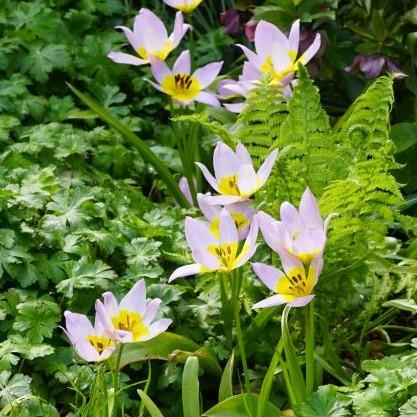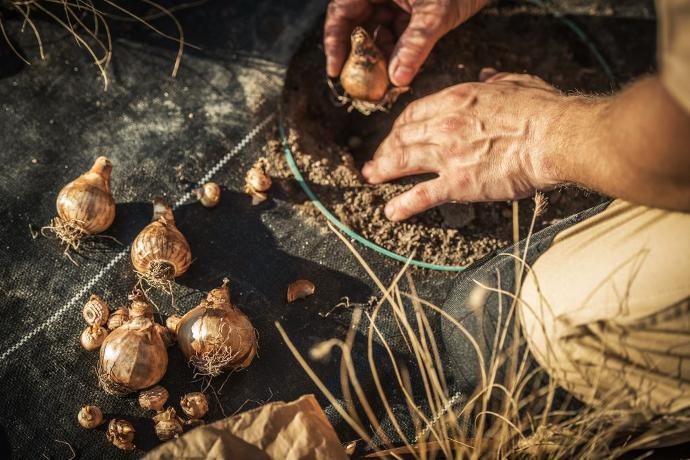If certain areas in the garden are bare after the bulbs have bloomed, it’s the right time to improve the soil. There are many ways to improve the soil, but our preference is to sow 1-year-old plants or to cover the soil with organic material. After you’ve taken these steps, which significantly improve the soil quality, plants will bloom much more beautifully, and they’re less susceptible to diseases. You’d also be helping out the bugs that live in the soil.
When should you improve the soil?
The soil can be improved during several periods of the year. For example, just after spring when the first flower bulbs have finished blooming. But also in autumn and winter. The flower bulbs and annual plants have just been removed, or the perennial plants have died and are looking a little sad. This is perfectly normal, so let this happen and don't clean it up! Many insects can let their larvae and pupae hibernate here. Many birds also get nutrients from the seeds of the faded flowers, because they contain a lot of fats that the birds can enjoy throughout the winter. This is the time for you to improve the soil quality, and there are a few ways to go about it.
How can you improve the soil?
After the first flower bulbs are done (around April) and you have nothing else planned for this section of your garden, it’s a shame to just leave the ground bare. Cover this ground and make sure it’s never fallow. You’ll notice that with fallow land, the soil life is much less active, making it less nutritious for the possible next load of flower bulbs.
1. Sow soil-improving plants
Personally, I would ensure that the flower bulbs are planted between permanent plants, where the foliage can die off nicely. In that case, you hardly have to do anything after planting. If you can’t do this, it’s best to sow the bare areas with soil-improving plants, like:
- Blue lupine
- Buckwheat
- Yellow mustard
- Phacelia
- Winter rye

These soil-improving plants ensure that the soil becomes more nutritious. In particular, they ensure a better structure of the soil, in which you can later grow other plants or bulbs.
2. Mulch
If you don’t want to sow anything because other plants will soon be planted in the same area, we recommend covering the bottom with a mulch layer. Mulching is covering the soil with organic material, such as;
- Dry leaves
- Compost
- Gras clippings
- Wood chips
- Cocoa shells
- Straw
You do this in the spring on fallow land and in the winter between the dead plants. This protects the soil from drying out and helps to keep soil life going.

After a while, the quality of the soil will improve, but not because of the soil improving plant itself. The mulch will put the soil underneath to work. The soil life gets going and this ensures a better structure. As a result, the plants or bulbs that grow the following year will have more free space and the excess water will be drained more easily. The bugs in the soil ensure that the soil becomes looser and lighter. These are all good things and you don't have to do anything about it.
Advantages of covering the bottom
By sowing in the soil, you ensure that more CO2 is stored. You make the earth greener and help reduce the climate problem.